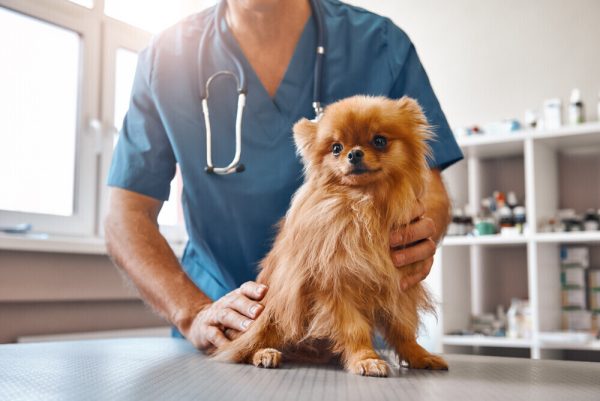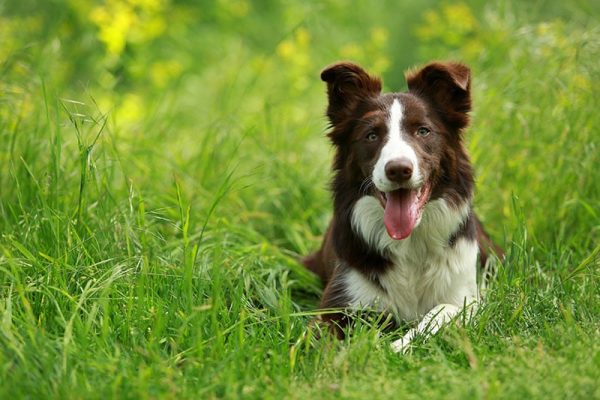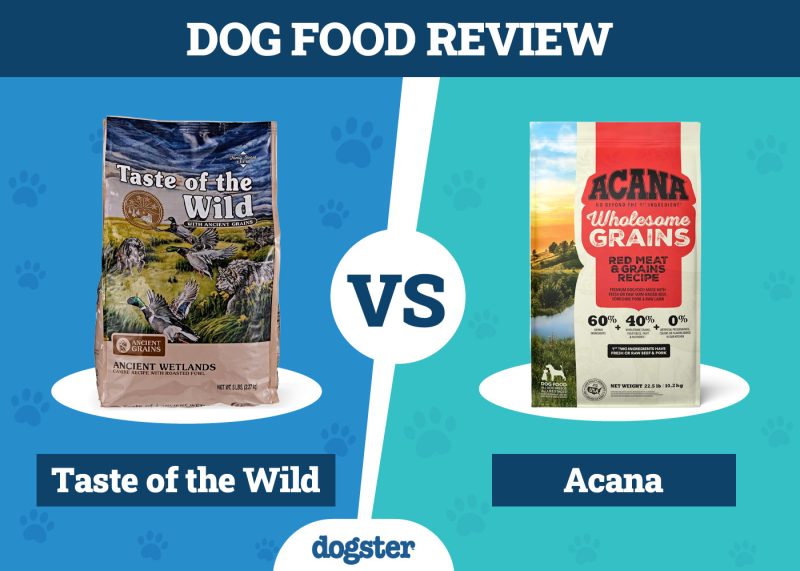It’s rare to find a cat and dog on speaking terms, but the communication between your pets might surprise you despite the language barrier. As it turns out, dogs and cats can talk to each other in some ways, using their body language and understanding of nuanced differences between their communication styles to exchange information.
How well can our pets communicate? We’ll explore whether dogs and cats talk to each other and the surprising ways that you can facilitate a better relationship.

How Do Dogs and Cats Communicate?
Even if they communicate, to say dogs and cats talk isn’t 100% accurate. While humans have distinct languages with countless words symbolizing specific concepts, dogs and cats use a collection of vocal and non-verbal communication or body language to interact with conspecifics and other animals.
Cats and dogs use their tail, posture, ears, mouths, tongues, and other body language indicators alongside several vocalizations to give away their location, warn about possible threats, and communicate their general emotions or needs.
While non-verbal communication and, to a lesser extent, vocalizations play essential roles in communication, scent is also quite important for both animals. Cats use smell to mark their territory, identify familiars, and find mates.
Urine spraying or scratching to mark territory are just some of the examples, but even rubbing their head on your leg leaves pheromones that designate you as a friend. For their part, dogs use their noses to communicate when meeting someone.
Their sense of smell is so acute that they can acquire mounds of information, such as the other party’s sex and even some health issues. With a healthy scent memory, they can make lasting associations with people and other animals based on their smell.

Can Dogs and Cats Talk to Each Other?
Although dogs and cats don’t talk to each other in the traditional sense, they can learn each other’s body signals through observation to communicate effectively. They already use body language in many similar ways, such as:
- Raising hair along the back when scared or cornered
- Growling as they get aggressive
- Staring intently as a sign of dominance
- Flattening the ears, crouching, and retreating when afraid
Many of these behaviors are easy to interpret, not just by members of the same species. A growling dog with bared teeth or a hissing cat is relatively unambiguous, and most animals, including humans, have little issue figuring out their meaning.
Dogs and Cats Learn to Communicate
Interpreting signals in your own language is one thing. But can dogs and cats learn the meanings behind cues unique to the other pet? As it turns out, studies have found they are intelligent and adaptable enough to figure out other animals’ signals, especially when learning human cues ranging from gazes and pointing to emotional states, like sadness and happiness.1
Researchers suggest dogs and cats use the same mechanisms for learning their species’ communication patterns to learn that of other animals. They may also find connections between an animal’s behaviors and the rewards of various actions surrounding them.
Cats and dogs in friendly relationships can even learn how to interpret non-verbal cues that look similar to their species’ behaviors but have opposite meanings. Examples include:
- Raising the tail is a dominant display in dogs and friendly behavior in cats
- Tail wagging is friendly in dogs and aggressive in cats
Going a step further, cats and dogs can sometimes integrate the other pet’s communication techniques. For instance, well-socialized dogs are often willing to adapt by greeting cats with nose-to-nose sniffing and will accept head rubbing. How well they communicate and accept each other will also depend on their early experiences with the other species and the age at which they were introduced to each other. Studies have shown that interspecies interaction is more successful if the cat was present in the home first and if the cat was younger than 6 months and the dog was under a year old.2

Factors Affecting Dog and Cat Communication
Early socialization is the key to developing solid communication between cats and dogs. Age, play, and proximity are fundamental platforms for building social skills and bonding.
When they meet at a young age, dogs and cats have a better chance of learning each other’s language during a crucial development period. They’ll then have an easier time initiating friendly play and maintaining a positive relationship.
Early socialization is critical for both species. Some dogs, if not being socialized with cats from a young age, may be fearful, reactive, too excited, or even aggressive toward cats. Cats, by contrast, may have a fight-or-flight response if they aren’t used to dogs, resulting in the dog giving chase. In general, social experiences with the other species should happen during the first few months for cats and under 1 year for dogs.
The adoption order can be almost as influential as the pets’ ages, with friendlier relationships being formed if the cat has been adopted first. Dogs with a home to themselves may be less willing to share their owner’s attention. Though still friendlier than not, they have a higher chance of being hostile or indifferent towards a new cat.

How to Ensure Better Communication Between Your Cat and Dog
You can’t always control factors like adoption age or order, but you can manage your pets’ introductions and environment to improve the chances of a positive relationship. Here are a few essential tips for pairing a cat and dog under one roof.

Use a Slow Introduction Process
Tossing a cat into a room with a dog will be stressful for both parties, setting their relationship off on the worst foot possible. Cats and dogs develop associations. If they’re anxious around the other, they’ll associate them with negativity and respond with hostility or indifference.
Your job is to provide emotional control during their interactions. Introduce your pets slowly. Separate them for the first few days, especially if your new pet isn’t up to date on checkups and vaccinations. Keeping a closed door between them will let them exchange scents, hear each other, and get used to another animal in the house.
To build a positive association with the other, feed them while they’re near each other but in a separated and controlled environment. Put their bowls next to a closed door separating them, or while a cat is in a secure crate. They can then associate the other’s presence with the reward of food without feeling threatened that the other pet will eat their food, which is more true for dogs than cats.
When they’re ready to interact, bring them to a common room or somewhere both animals feel safe. Keep your dog on a relaxed and loose but controlled leash as the cat wanders around. Another much safer option may be keeping the cat in a closed crate and getting them used to each other before letting the cat out. This may take weeks or even months, in some cases.
Again, create a positive association by giving your dog treats for staying relaxed, and maintaining a calm and reassuring environment for both. Do not rush this step, as it may dictate their future relationship and both animals’ safety. Avoid playing with toys, as dogs may not feel comfortable sharing, and this could lead to aggressive behavior due to competition for resources.
Provide Enrichment and Hiding Spots
Before pairing your pets in the same room, ensure the space accommodates both animals. Hiding spots are a priority, and cats should have high shelving. A climbing wall for escape is an excellent idea, preventing a stress-inducing chase. They can stay still and climb up high, and the dog will relax down below.
Keep plenty of toys and enrichment devices for both pets and make sure they have both exercised sufficiently, so they are calmer when making introductions. Avoid playing with one or the other animal while they are in the same room during the first few weeks or months. Playing raises their energy and level of excitement, particularly in dogs, which may lead to chasing, excited barking, or even growling. Playful cats will run around, which may set the dog off to chase them, or the cat may try and swipe at the dog. You want to encourage calm and controlled energy instead.

Prevent Resource Conflict
Maintaining a safe space for your pets will promote better relationships and prevent poor behavior. They should have convenient access to resources like bowls, beds, and potty places.
But they also need you and your engagement to feel they are not losing anything from the other pet’s presence. This is particularly true for dogs, who are more likely to become jealous and protective of their resources. Exercise both of them daily, show them ample affection, and reinforce good behavior whenever possible.

Final Thoughts
Cats and dogs don’t talk to each other, but under the right circumstances, they can communicate almost as efficiently as they do with their own species. Thanks to domestication, these pets can learn to get along well, even picking up the other’s body language if they grow up together. With your encouragement, they can see the benefit in each other’s company and enjoy a healthier life with a happy relationship.
Featured Image Credit: vvvita, Shutterstock




















